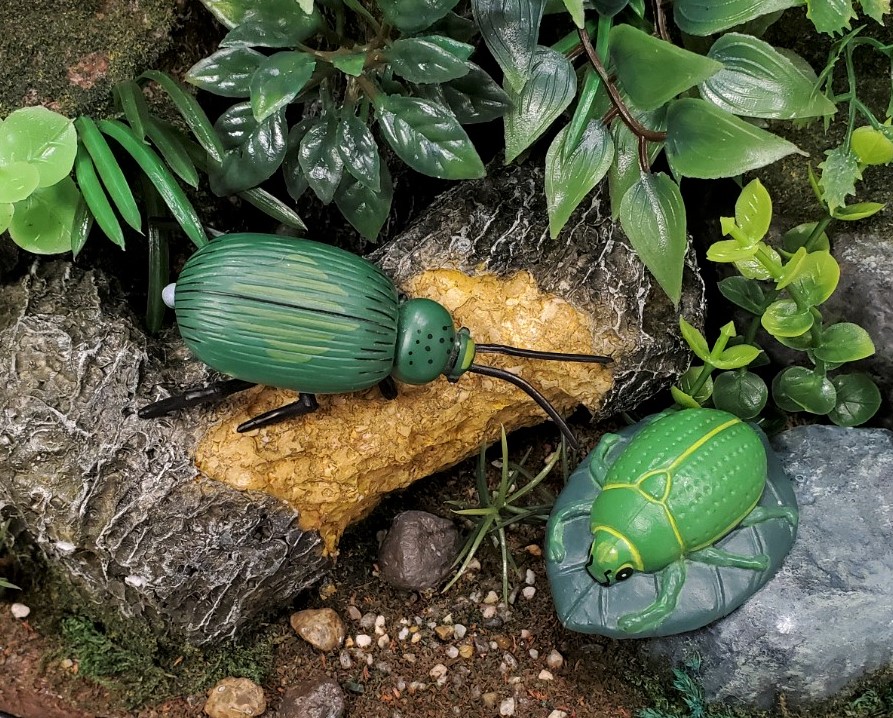This week Christmas is celebrated throughout much of the world. In trying to keep with holiday themes, I have decided to review a pair of green Christmas beetles (Anoplognathus punctulatus) by Cadbury that were released in both the Australian and UK Yowies collections in 1997. Members the genus Anoplognathus are commonly called ‘Christmas beetles’ as they tend to be abundant during Christmas time in Australia. For those of us that live in the Northern Hemisphere, we generally do not associate scarab beetles with the holiday season, but we need to remember Christmas comes in the middle of the summer in Australia! There are roughly 35 species in the genus, all native to Australia, especially in the forested areas of the eastern half of the continent, and Tasmania. Larvae feed on plant roots and other organic matter underground. Adults feed on the leaves of plants, primarily Eucalyptus, for which they are often considered pests.

First let’s look at the Australian release. And might as well get this out of the way, this is an absolutely horrible rendition of this species. In fact, it looks absolutely nothing like any member of the family Scarabaeidae; the prothorax-mesothorax junction is too pedunculate and the antennae are too long and filiform. If someone showed me this figure without previously having knowledge of it and asked me to guess what it was, my first thoughts would be something in the families Chrysomelidae or Anthicidae. But this is the nature of Australian Yowies, they are usually prone to being highly stylized. Also, like other Australian Yowies, the figure requires assembly and is slightly articulated. It measures 4.3 cm (excluding appendages) for a scale of 1.4:1 for a maximum-sized individual of 3.0 cm. The color is also a bit stylized but accurate for the species.




Next, we’ll look at the UK version. This figure is MUCH better and actually looks like a scarab. It has a body length of 3.5 cm, making it slightly over 1:1 for a large specimen. The shape is accurate for the species and the elytral striae are even arranged in rows of punctures, a key morphologic feature of this species. Even the color looks better than its Australian counterpart. The figure does not require assembly, but sits permanently attached to a leaf base that measures 5.0 cm long.



After looking at two versions of A. punctulatus produced by the same company in the same year, we are left with one very good representation and one absolutely unrealistic representation. If you want this species as part of a synoptic collection, I strongly favor the UK release. These figures are quite old now, but turn up periodically on eBay. Finding one or both usually doesn’t present with much of a challenge.

Disclaimer: links to Ebay and Amazon on the AnimalToyBlog are affiliate links, so we make a small commission if you use them. Thanks for supporting us!




The problem with reviewing two figures like this is that I don’t know how to cast my vote! I’ll just vote for the better of the two and give it five stars.